The 2024 Subaru Ascent Touring is poised to captivate Subaru drivers seeking a larger, more accommodating vehicle. As Subaru’s largest and most well-equipped model to date, the three-row Ascent has been recently updated and improved, making it an enticing option for those outgrowing their Forester or Outback.
However, the Ascent faces stiff competition in the crowded midsize three-row crossover segment. It must contend with popular rivals like the Kia Telluride, Hyundai Palisade, and the newly introduced Mazda CX-90. Carving out a niche in this highly competitive market will not be an easy task for the Subaru Ascent.
What’s New?
Last year, Subaru refreshed the Ascent by adding a rear-facing camera and a washer to help clear off dirt when driving off-road. The vehicle also features an intercom system, allowing front-seat passengers to communicate with those in the third row, usually children. Additionally, all Ascent trims except the base model now come equipped with automatic emergency steering, which can steer the vehicle around obstacles while maintaining its lane position. As for cupholders, the Ascent continues to offer a generous 19 of them which is more than enough.
Wheel and Tires
This top-of-the-line Touring Model comes equipped with 20-inch wheels fitted with high-performance 245/50 Falken all-season tires. Its advanced braking system features a quicker-acting electric booster that can automatically initiate a slowdown when the vehicle senses an impending collision.
Slightly New Looks
The vehicle’s front showcases an elaborate design, with stylized headlights, a prominent grille, and chrome-accented air inlets along the bumper. The rear updates are more subtle, as the previous rectangular taillights on the hatch now feature a distinctive C-shape. Subaru calls these “Konoji” taillights, which contribute to the vehicle’s modern aesthetic.
Under The Hood
The 2024 Subaru Ascent is powered by a turbocharged 2.4-liter horizontally opposed four-cylinder engine that produces 260 horsepower and 277 pound-feet of torque. This generous torque output is available across a wide rev range, from 2000 to 4800 rpm. Despite its substantial curb weight of 4,590 pounds, the Ascent accelerates from 0 to 60 mph in a respectable 6.8 seconds. Additionally, the Ascent is rated to tow up to 5,000 pounds.
Driving
The Ascent’s handling is competent, with well-controlled body motions in corners. However, its light steering lacks feel and feedback, diminishing the sense of driver engagement. While accurate enough, only the comparison-test-winning CX-9 truly provides a more enjoyable driving experience in this segment.
The Ascent’s ride quality leans toward the firmer, sportier side rather than plush comfort. This taut suspension might settle a bit with a full load of passengers or cargo on board. Even with the larger 20-inch wheels (lower trims have 18s), impacts are never harshly felt. At highway speeds, the Falken all-season tires do generate some noticeable noise.
The Ascent’s X-Mode drive settings, with options for deep snow/mud and less severe conditions, automatically engage below 25 mph to optimize all-wheel drive and powertrain performance. While this feature is helpful for off-road excursions, the accompanying beeps may become tiresome over time.
The X-Mode system also includes hill descent control, which maintains a steady speed when navigating steep, slippery declines, providing added confidence and control. We tested it on our crossover course, and even on the all-season tires, the Ascent climbed with ease, with only slight wheel slip.
Inside
The 2024 Ascent’s cabin features a sizable 11.6-inch center display, a significant upgrade from the previous model. However, this new screen may not appeal to those who prefer the tactile feel of physical buttons and knobs, as it controls nearly all functions through a somewhat dated-looking interface.
The large display panel requires frequent interaction, as users must wait for it to boot up before accessing features like heated seats or climate controls. Frustratingly, the system can feel sluggish in its responsiveness.
Subaru has retained some physical controls, including a volume knob and buttons for temperature adjustment, which is a welcome compromise. The Ascent also boasts wireless Apple CarPlay and Android Auto, a convenient addition for smartphone integration.
Both front and rear passengers will find USB-A and USB-C ports for charging, while the Touring trim level adds a 110V household-style electrical outlet for powering larger devices.
Rear Seat Accommodation
The Ascent’s excellent packaging gives it one of the most accommodating cabins in its class. The second row, available with either a three-seat bench or a pair of captain’s chairs, is spacious and versatile, with seats that slide fore and aft along a generous track. This allows you to position the seats close to the front for easy access to child seats, or pushed back for maximum legroom.
With a quick pull of a lever, the middle seats also fold and slide out of the way to ease entry into the third row. While that third row is reasonably spacious, even for two adults, more so than many competitors the bottom cushions are a bit low, and Subaru’s decision to fit three seats there compromises overall comfort. An eight-passenger configuration is more useful if you want to camp inside the car since the captain’s chairs don’t fold flat.
Cargo Space
The Subaru Ascent offers plenty of abundant cargo space. With the third-row seats folded down, there are 18 cubic feet of storage volume. Folding the second-row seats also expands the cargo area to 42 cubic feet. When the second-row seats are lowered, the total cargo capacity reaches an impressive 72 cubic feet. The factory-installed roof rails can support up to 176 pounds while driving. When the vehicle is stationary, the roof rails can handle up to 700 pounds, providing ample capacity for a rooftop tent.
Safety
The Subaru Ascent comes equipped with the automaker’s EyeSight suite of advanced driver assistance features, including automatic emergency braking, lane centering, adaptive cruise control, curve-adaptive headlights, and automatic high-beam control. The Touring model further adds blind-spot monitoring, rear cross-traffic alert, and a surround-view camera system. While the camera resolution isn’t the sharpest in the segment, the backup camera provides a clear view despite some blurriness.
Subaru has tuned the Ascent’s adaptive cruise control system to operate in a smooth, natural manner, accelerating and braking seamlessly. The lane-centering mode keeps the vehicle comfortably centered by tracking the car ahead rather than relying solely on lane markings.
Pricing
This Touring has a base price of $48,995 and you don’t get any options just accessories. This one has all-weather floor mats for $141. That plus destination takes you to $49,931.
VIDEO REVIEW
Verdict
The Subaru Ascent offers a comfortable and capable ride, with a starting price of $33,895 for the base trim – a solid bargain. However, it could benefit from improvements to the infotainment system, steering, and physical button layout. Despite these minor drawbacks, the Ascent performs impressively, particularly in off-road conditions.
2024 Subaru Ascent Touring Edition Numbers
BASE PRICE: $48,495
PRICE AS TESTED: $49,931
VEHICLE LAYOUT: Front-engine, AWD, 5-passenger, 4-door Wagon
ENGINE: 2.4-liter turbocharged and inter-cooled DOHC 16-valve flat-4
POWER: 260 hp @ 5,600 rpm
TORQUE: 277 lb-ft @ 2,000 rpm
TRANSMISSION: Continuously variable automatic
CURB WEIGHT: 4,542 lb
0-60 MPH: 6.9 seconds
FUEL TANK CAPACITY: 19.3
FUEL ECONOMY: 25 City/32 highway/28combined
OUR OBSERVED: 23.8 mpg
CARGO SPACE: 17.8 cubic feet behind 3rd row, 43.5 cubic feet behind the second row, 75.6 with all seats flat
PROS: Turbo 4 has good power, CVT is a bit jerky at low speeds, solid, and predictable
CONS: Infotainment is slow at times, steering is too light

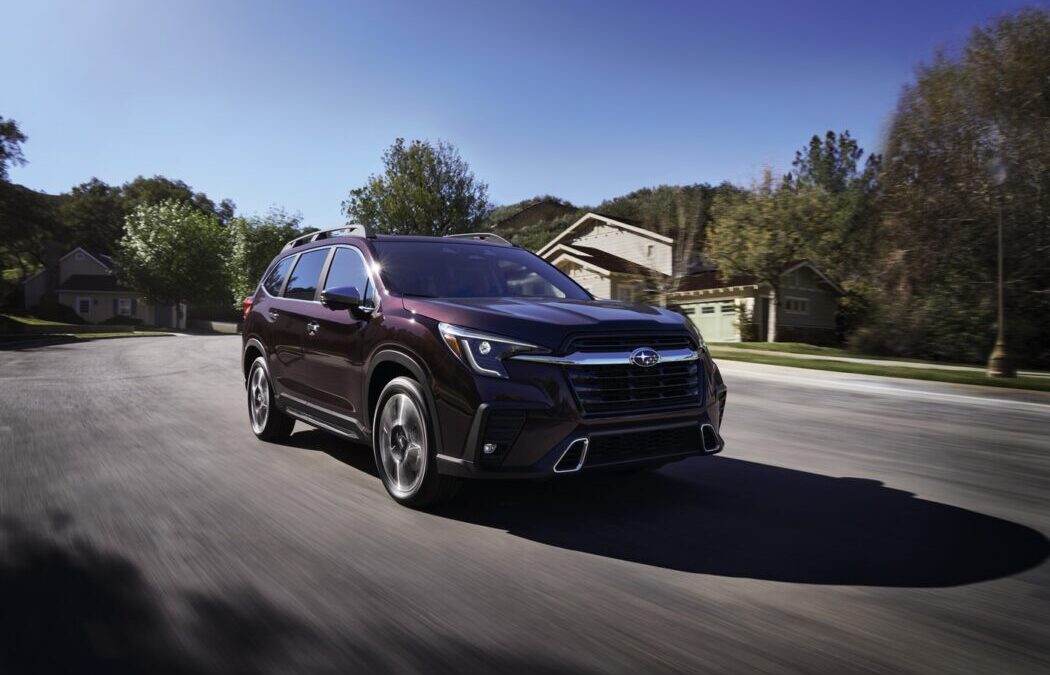
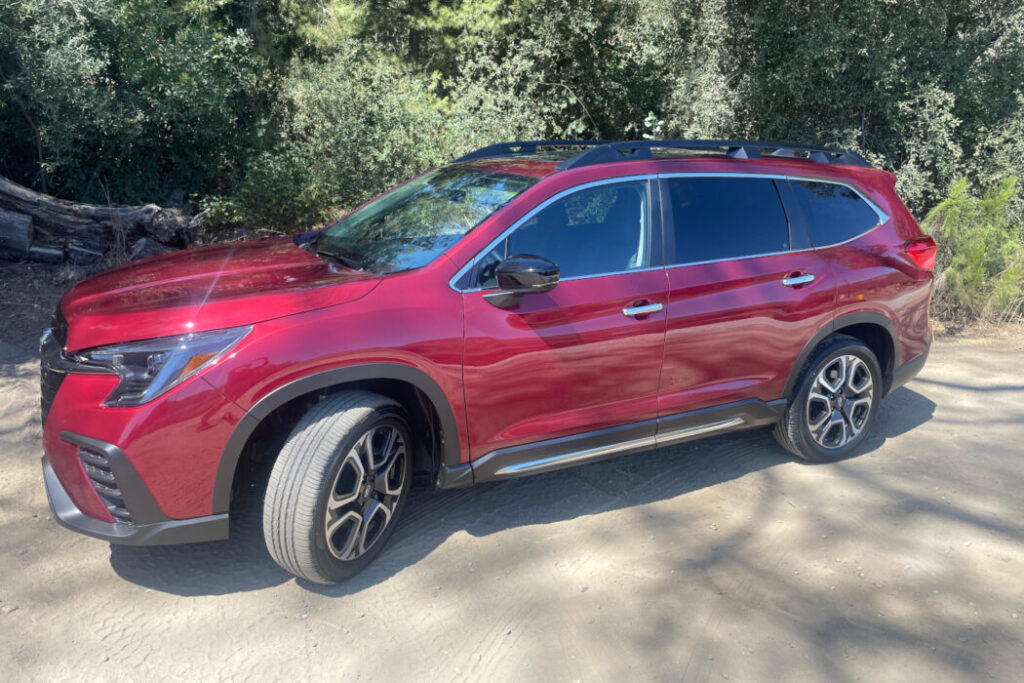
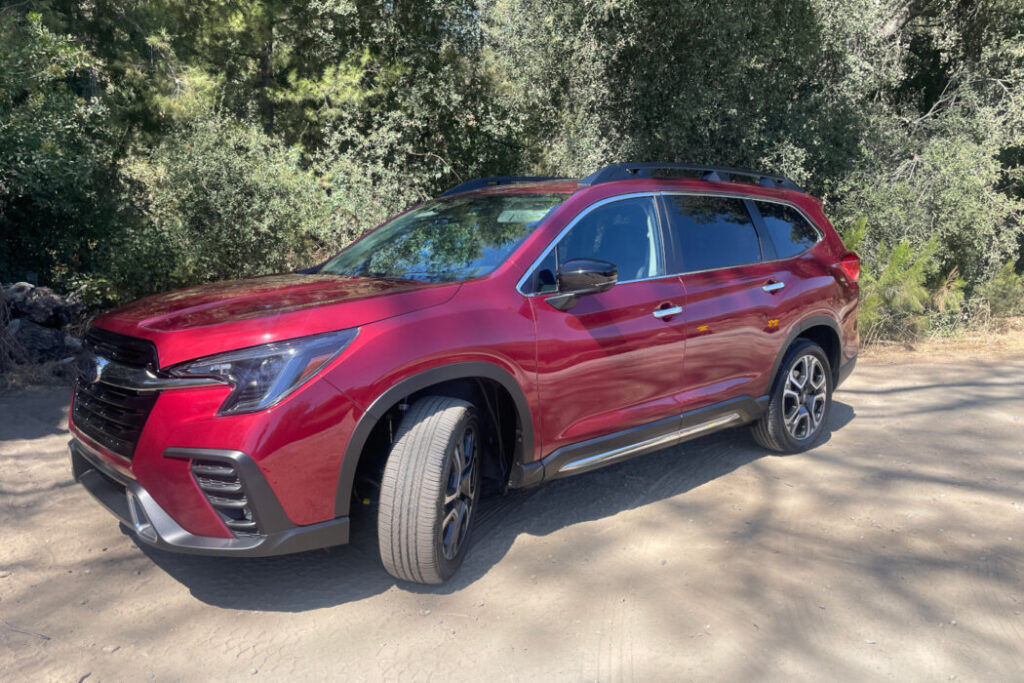
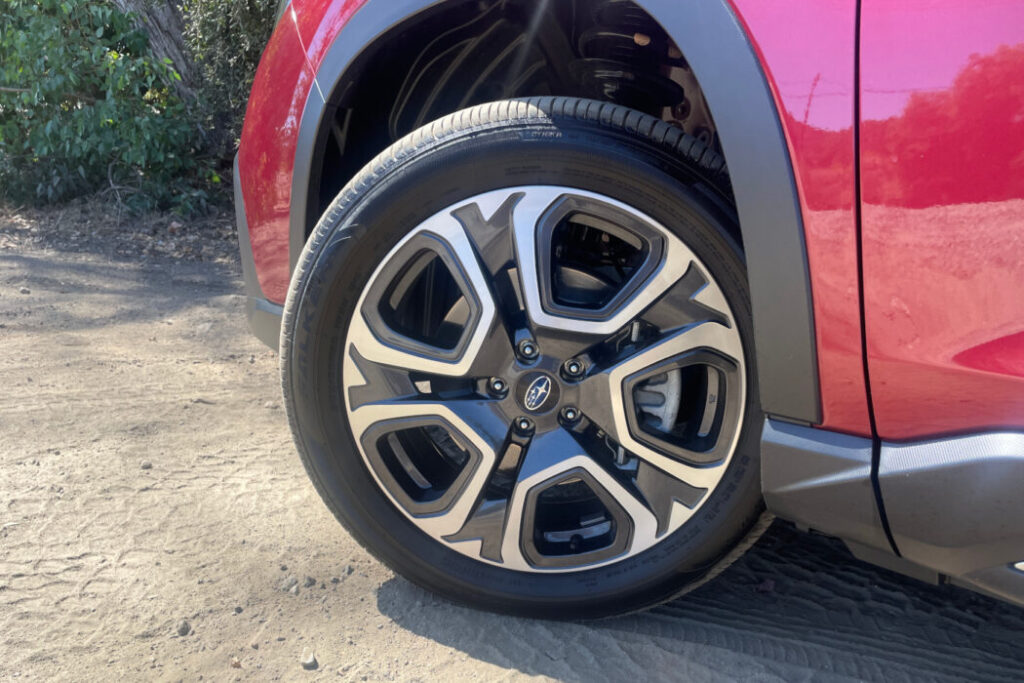
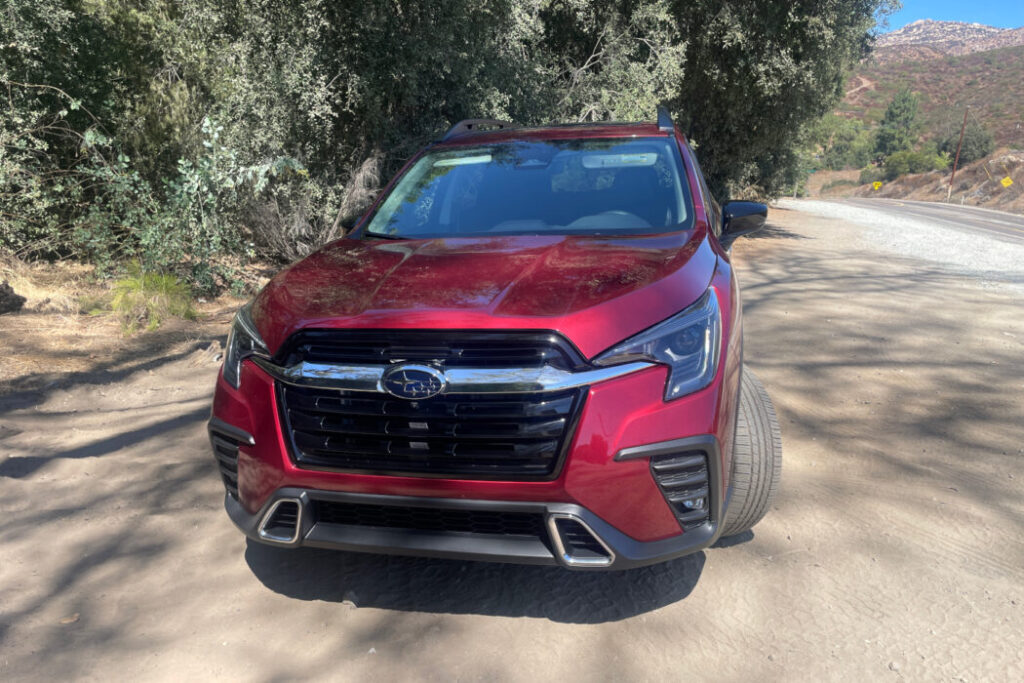
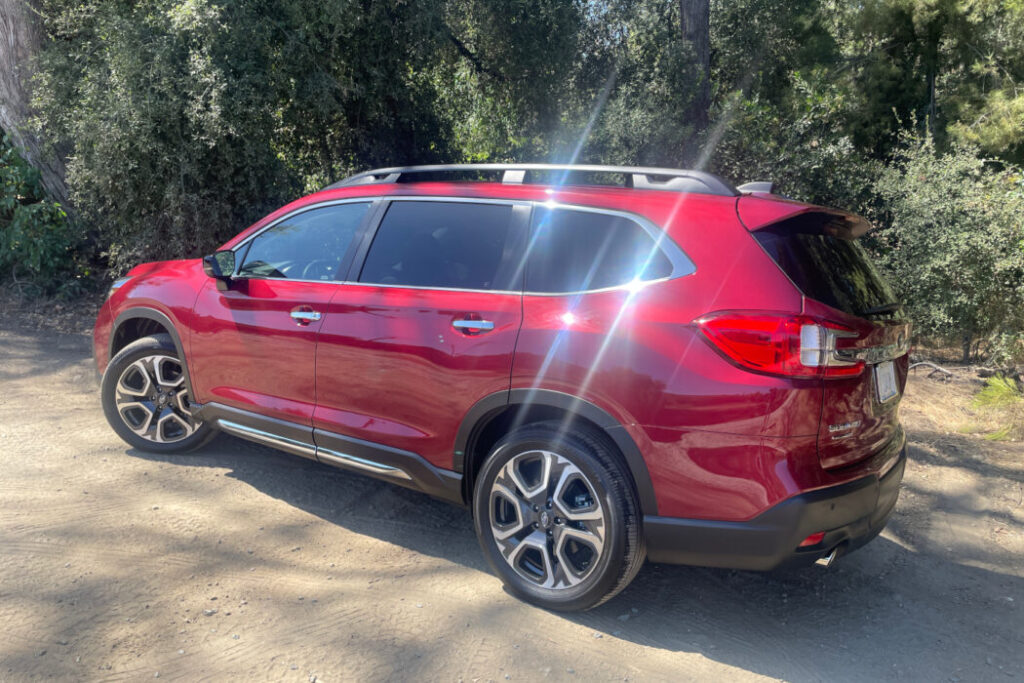
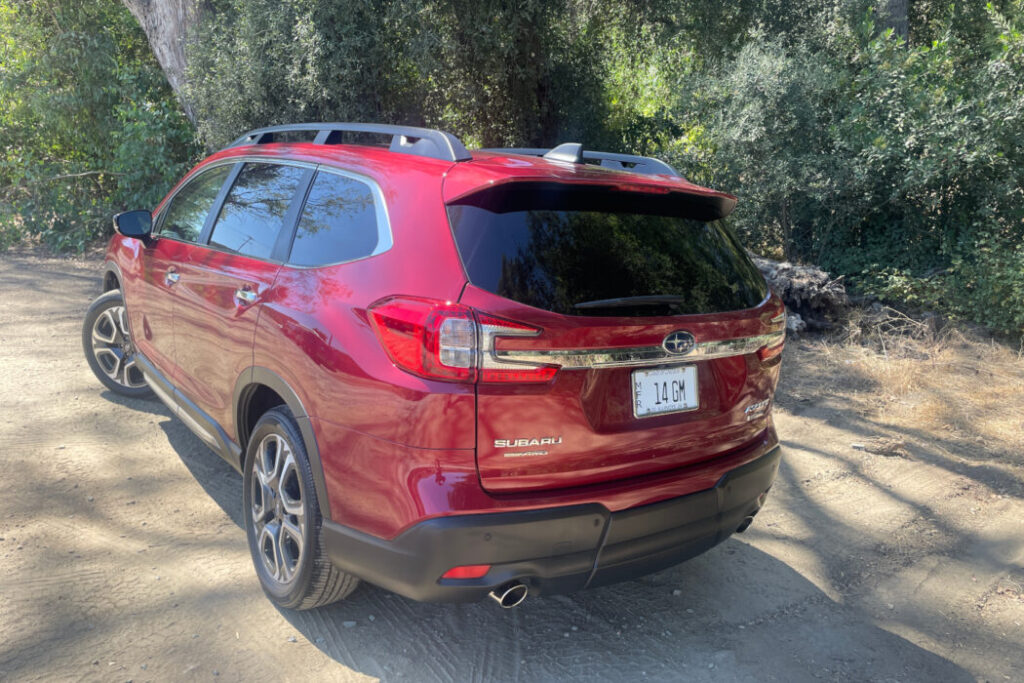
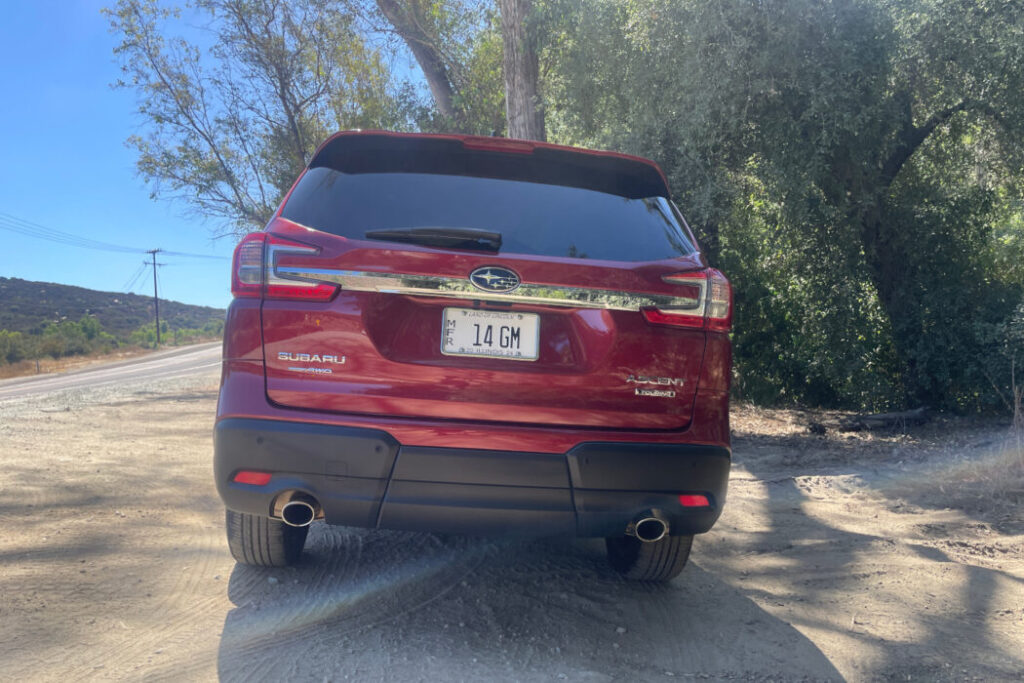
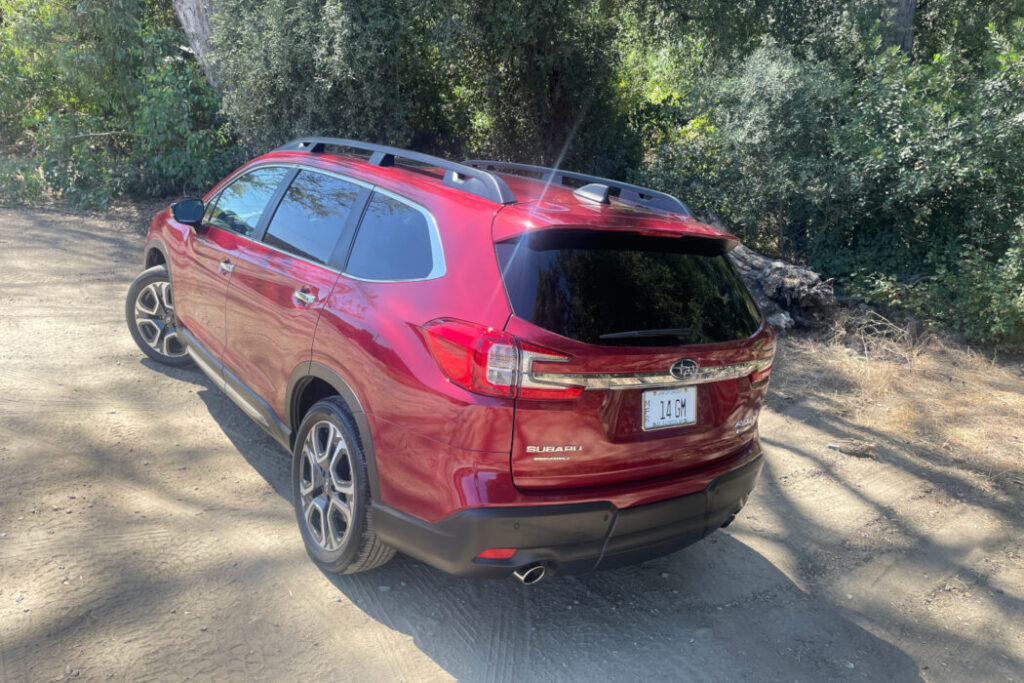
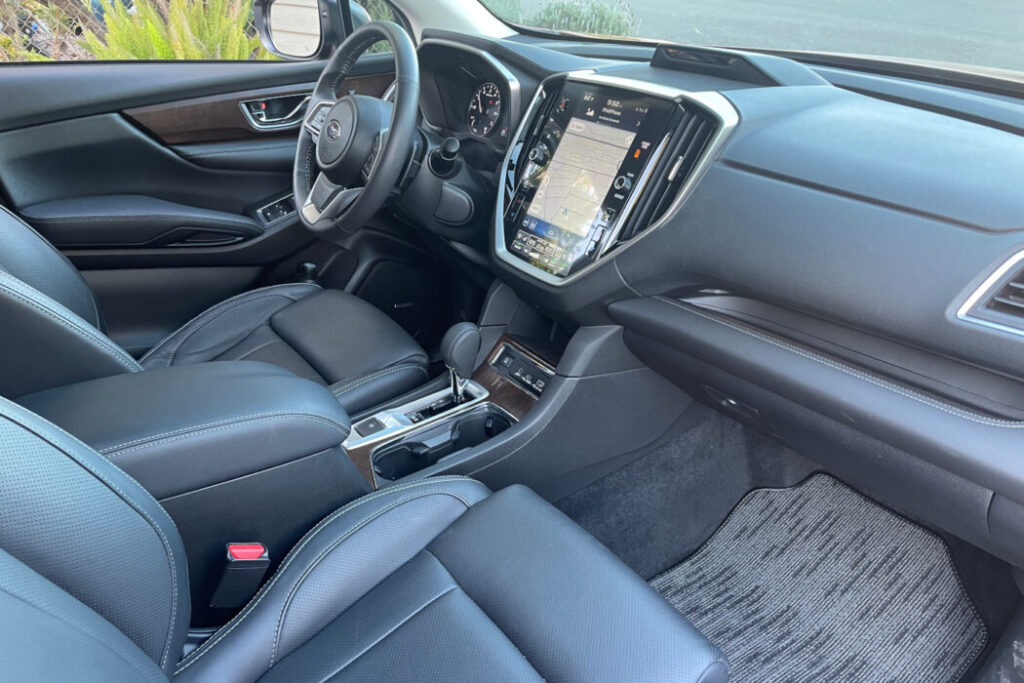
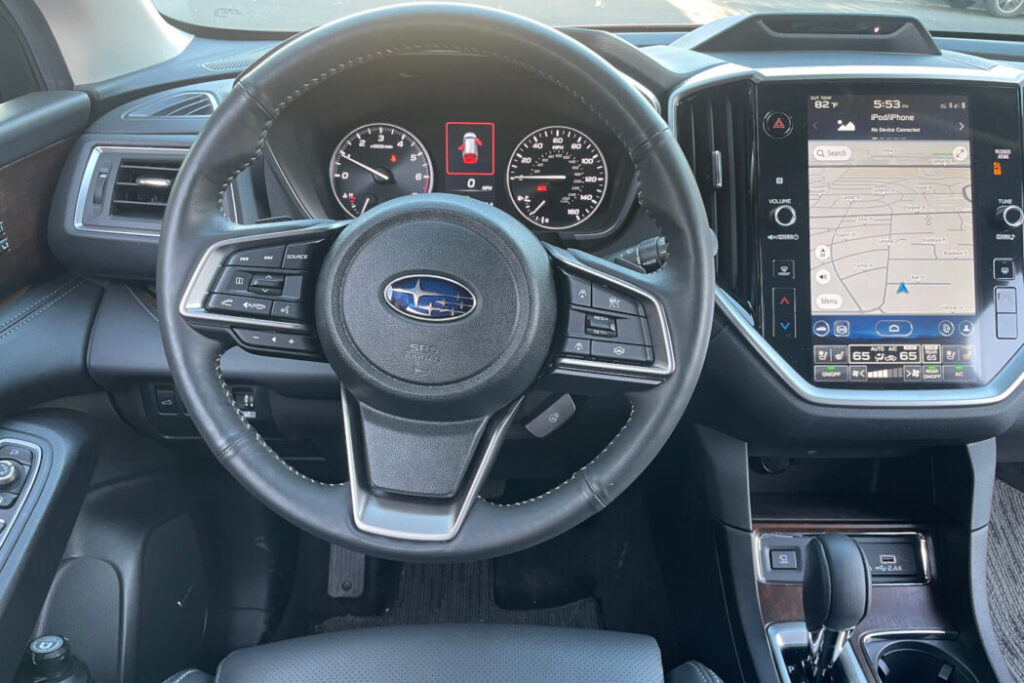

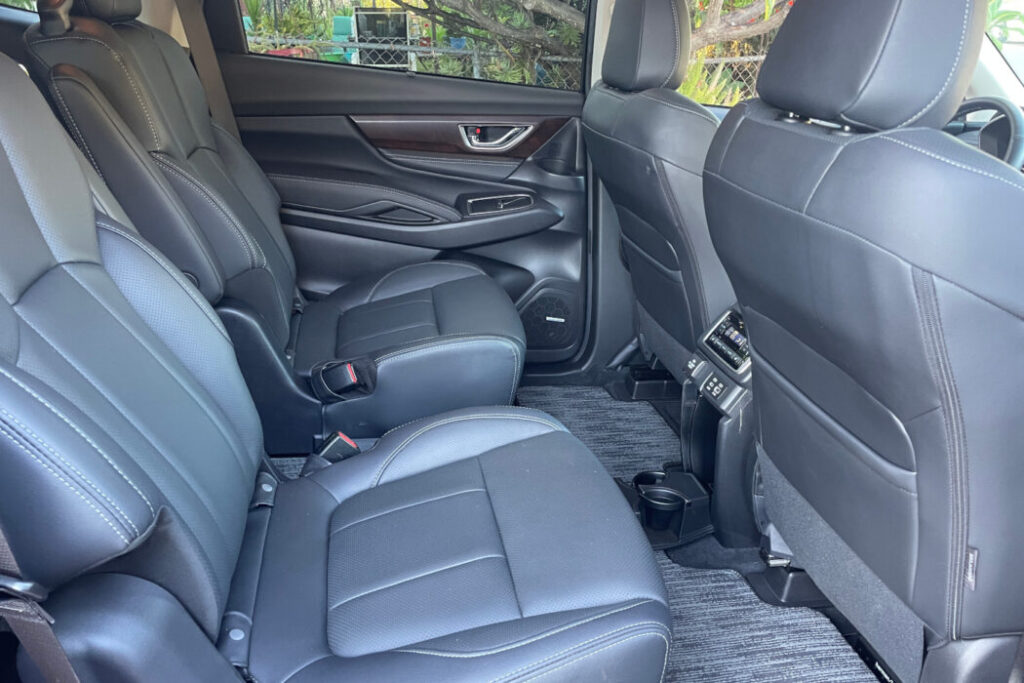
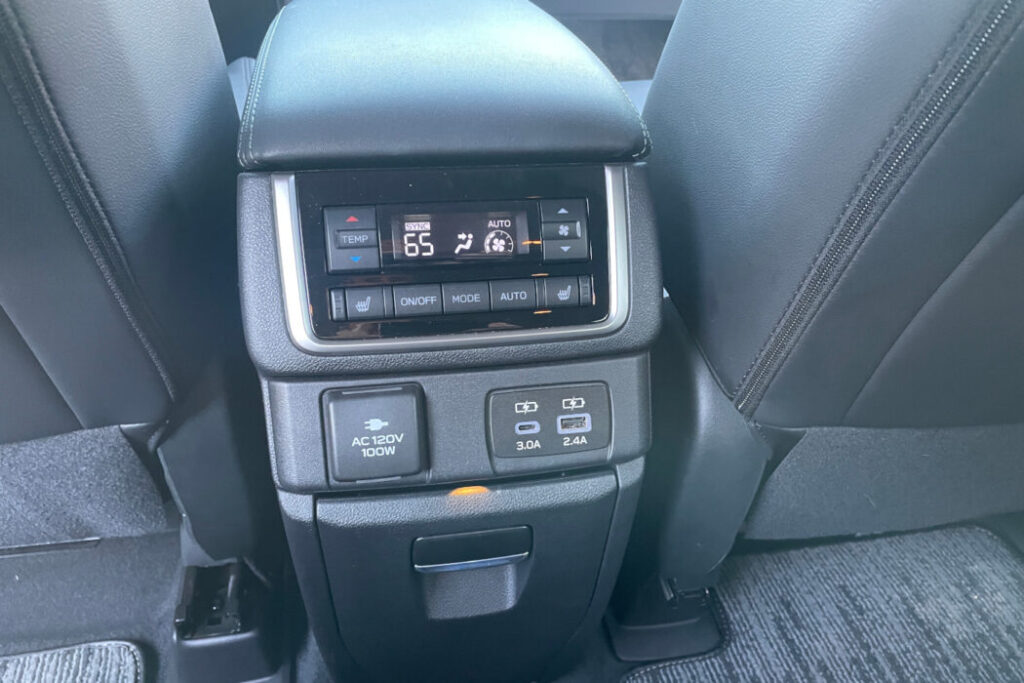
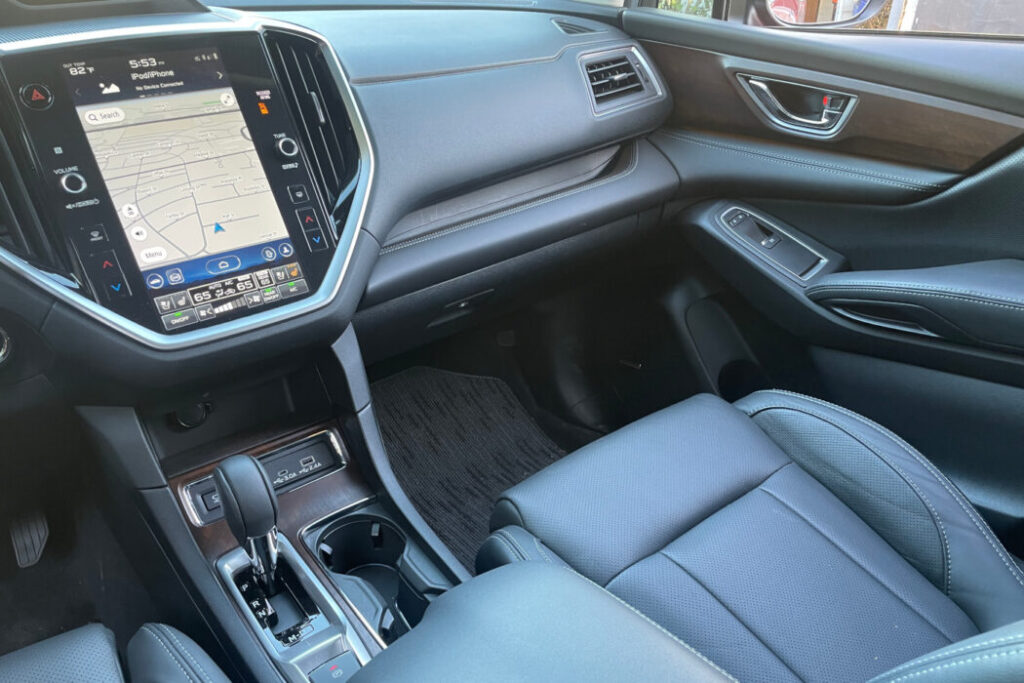
Social Media